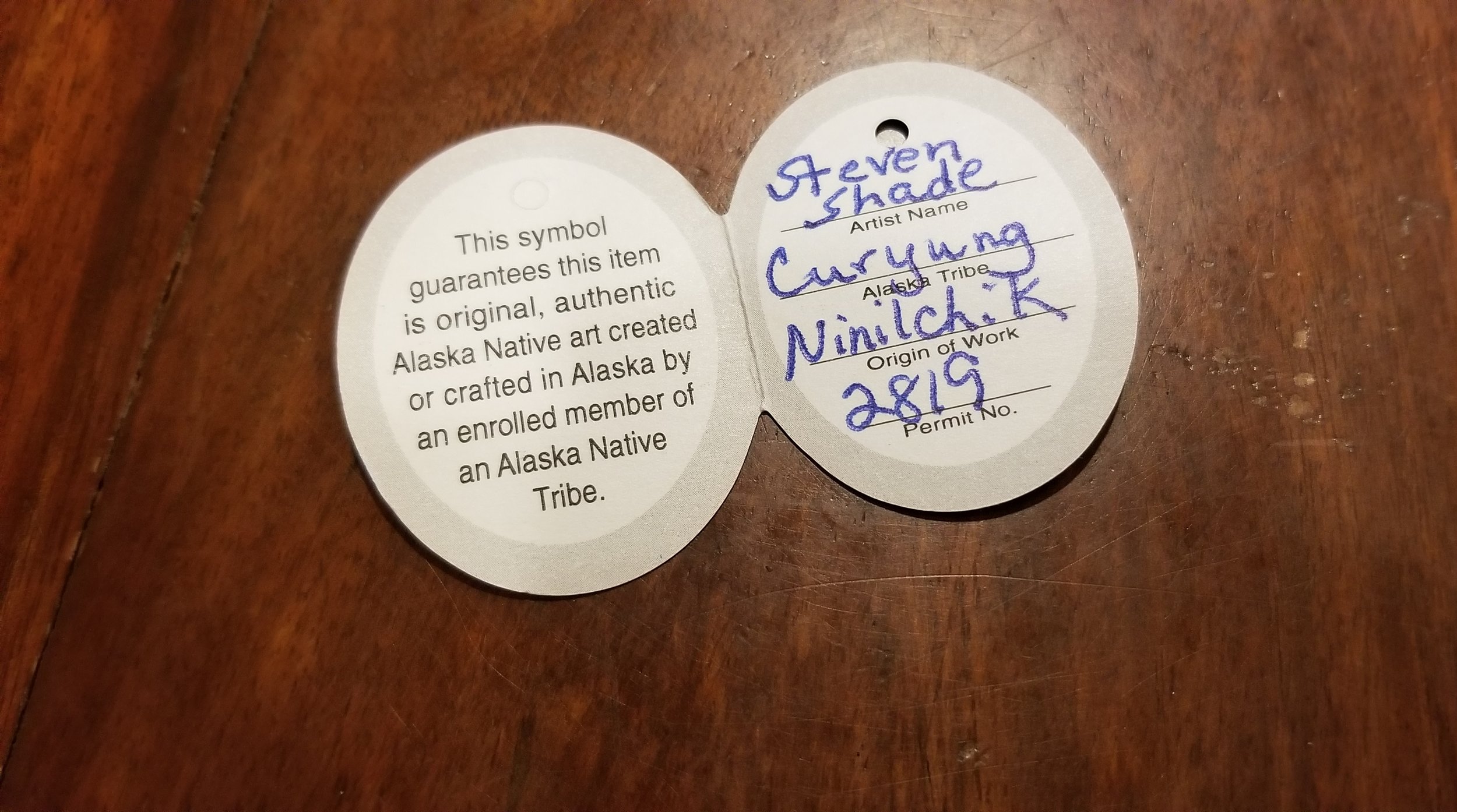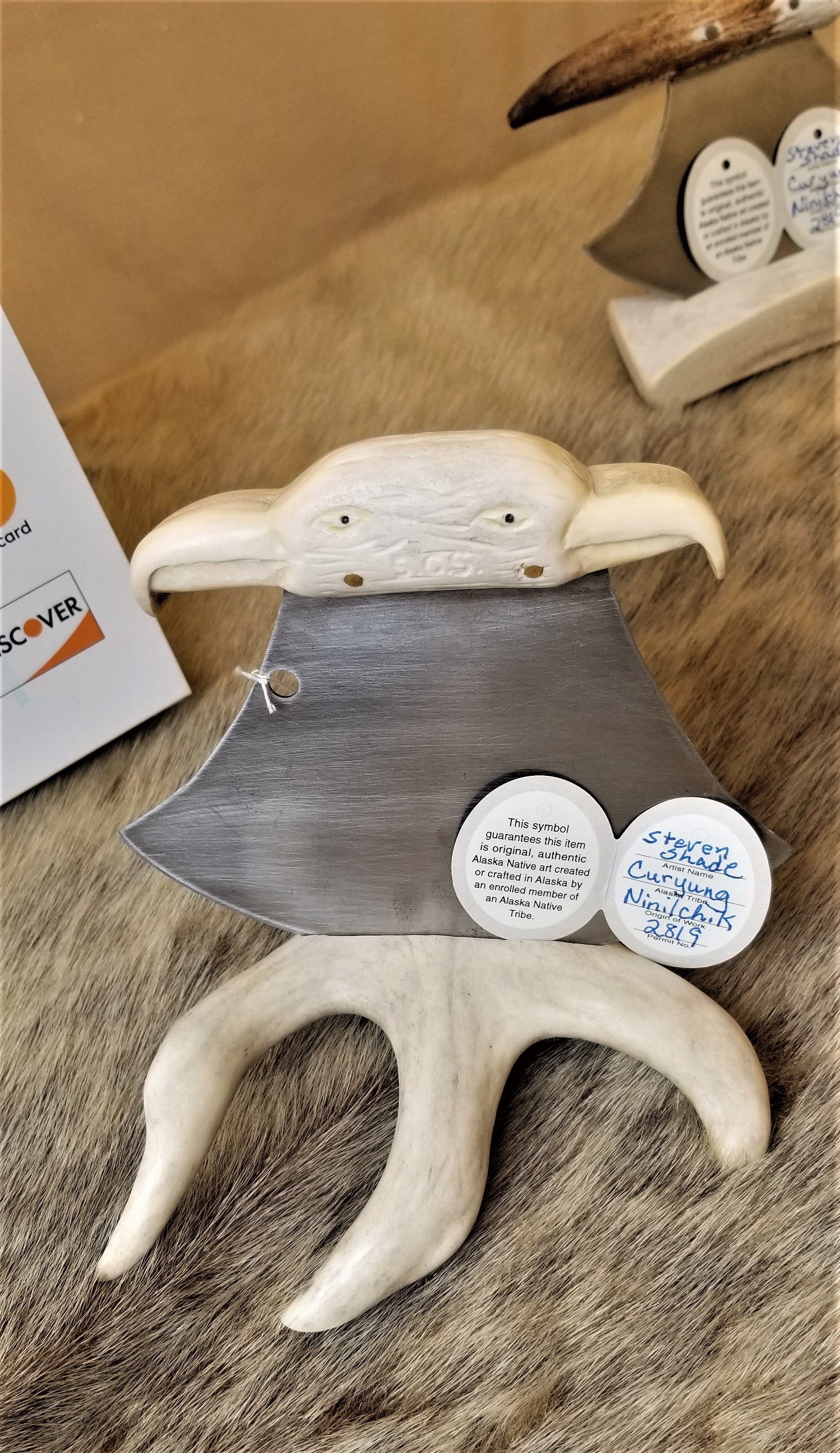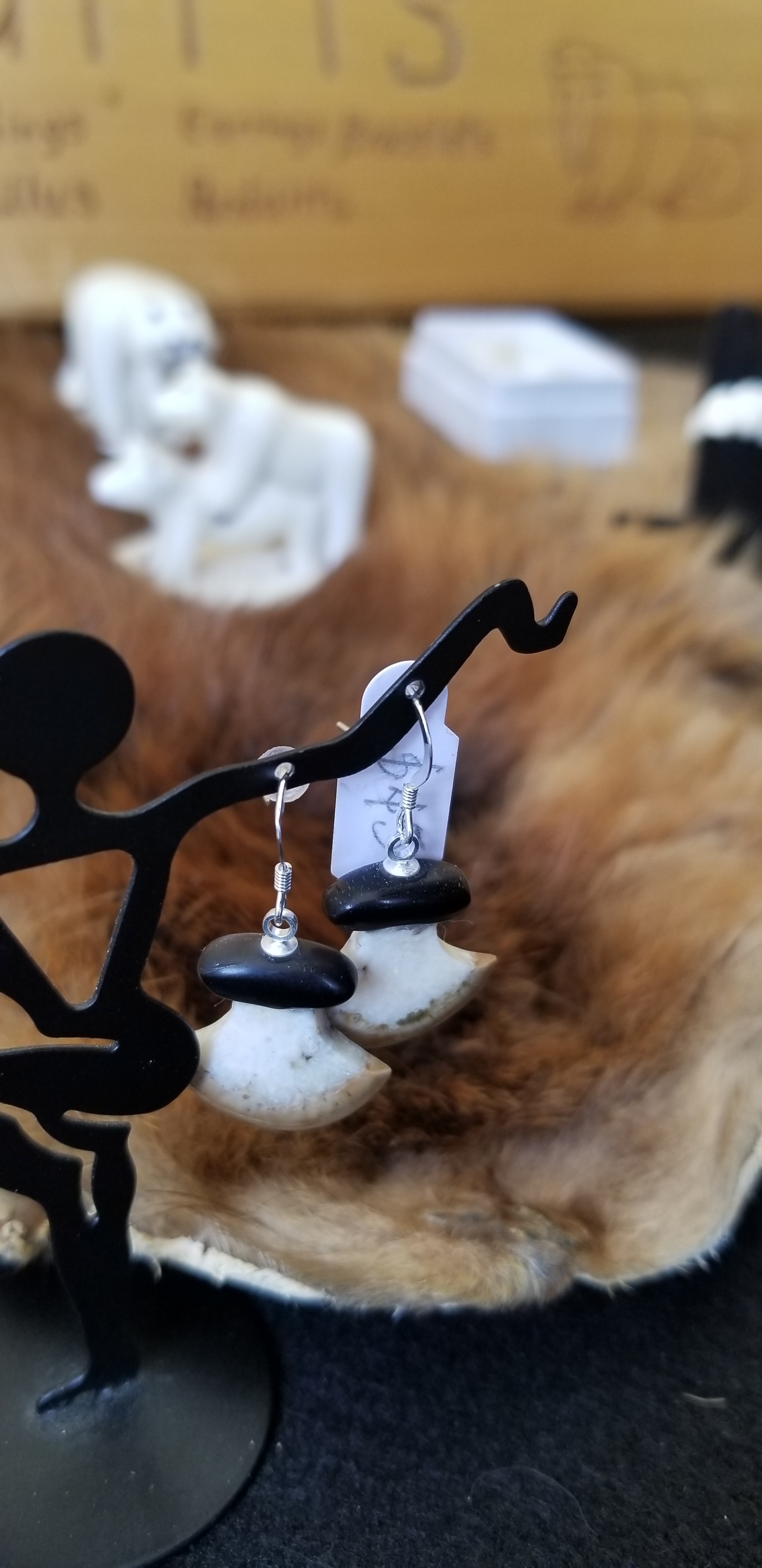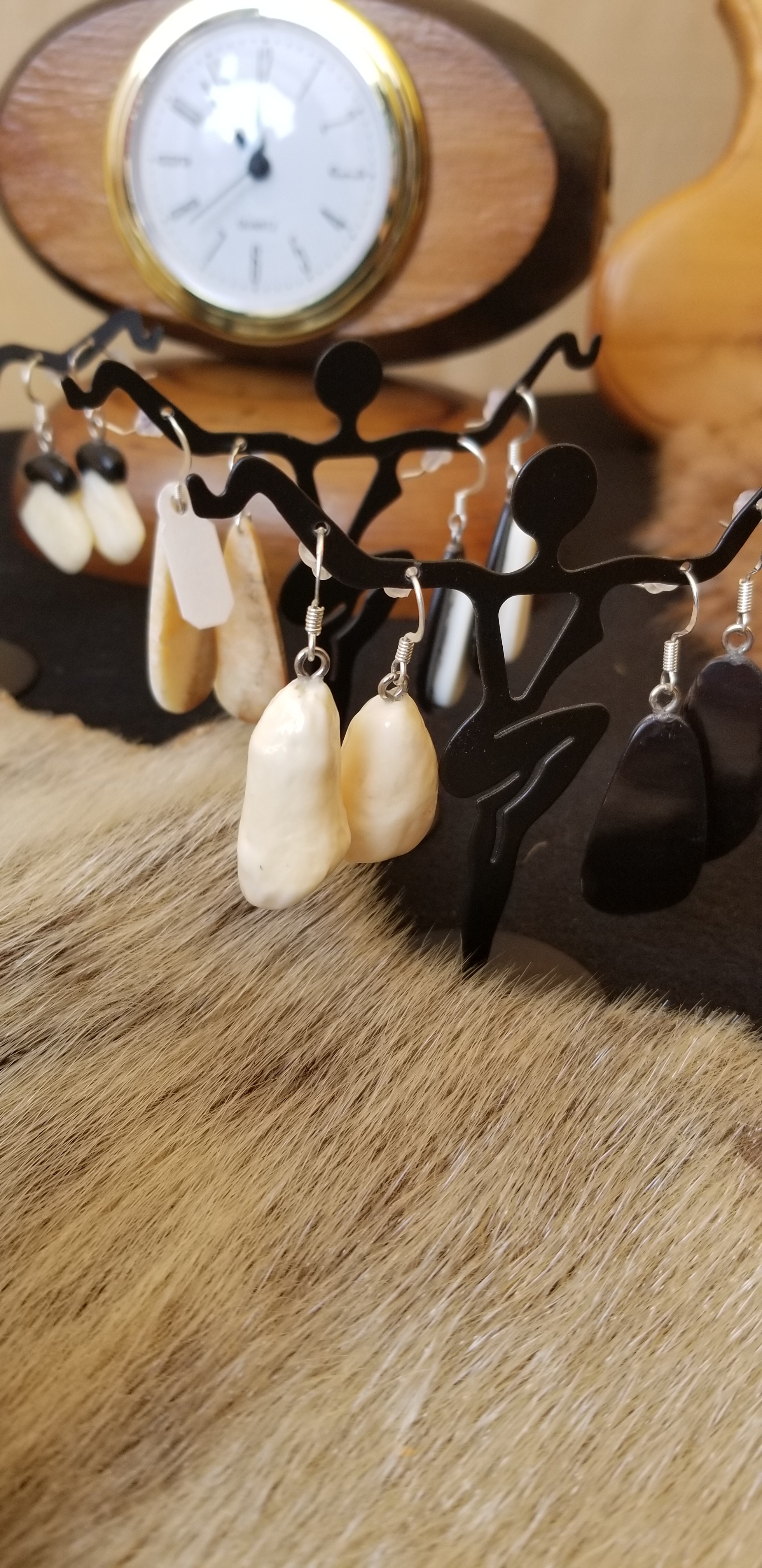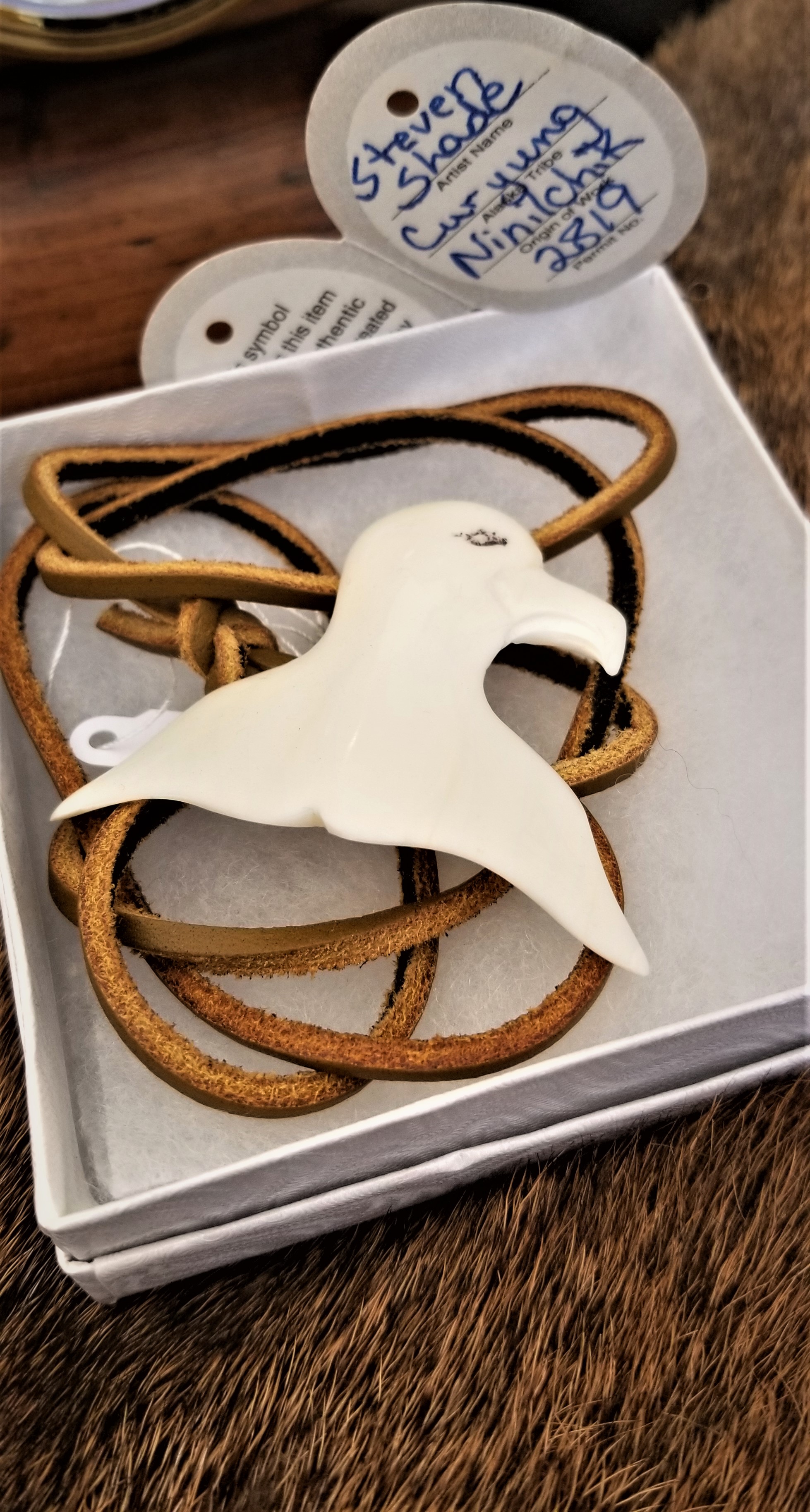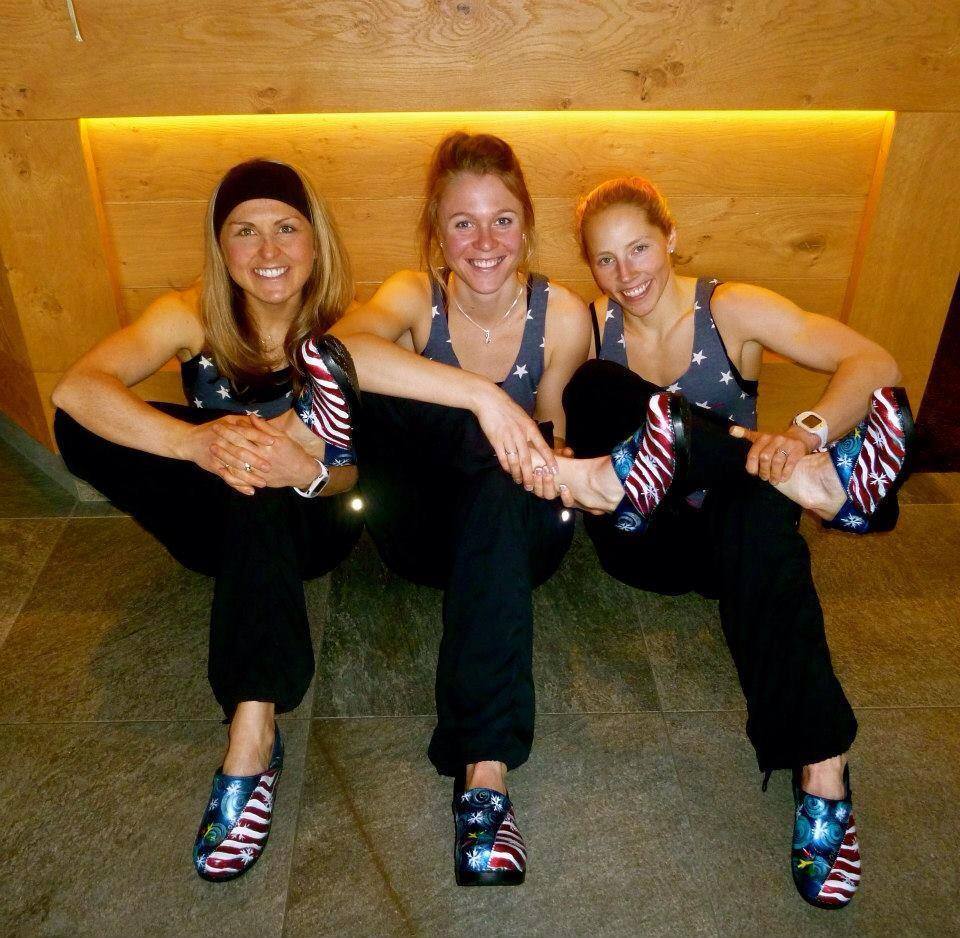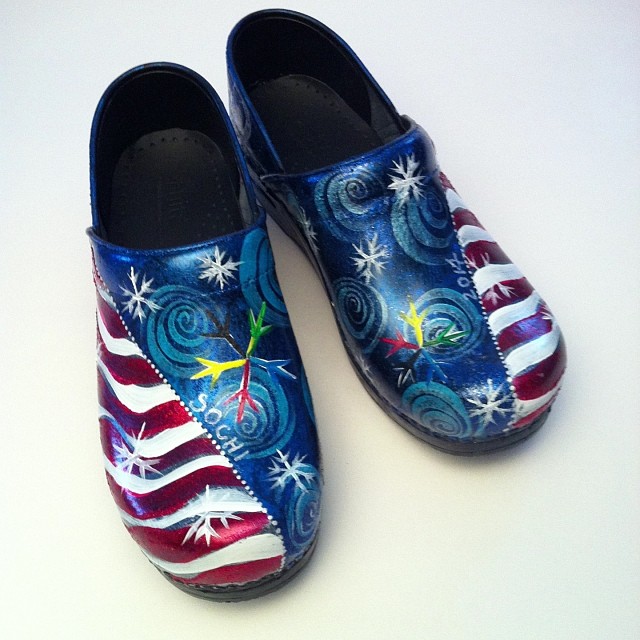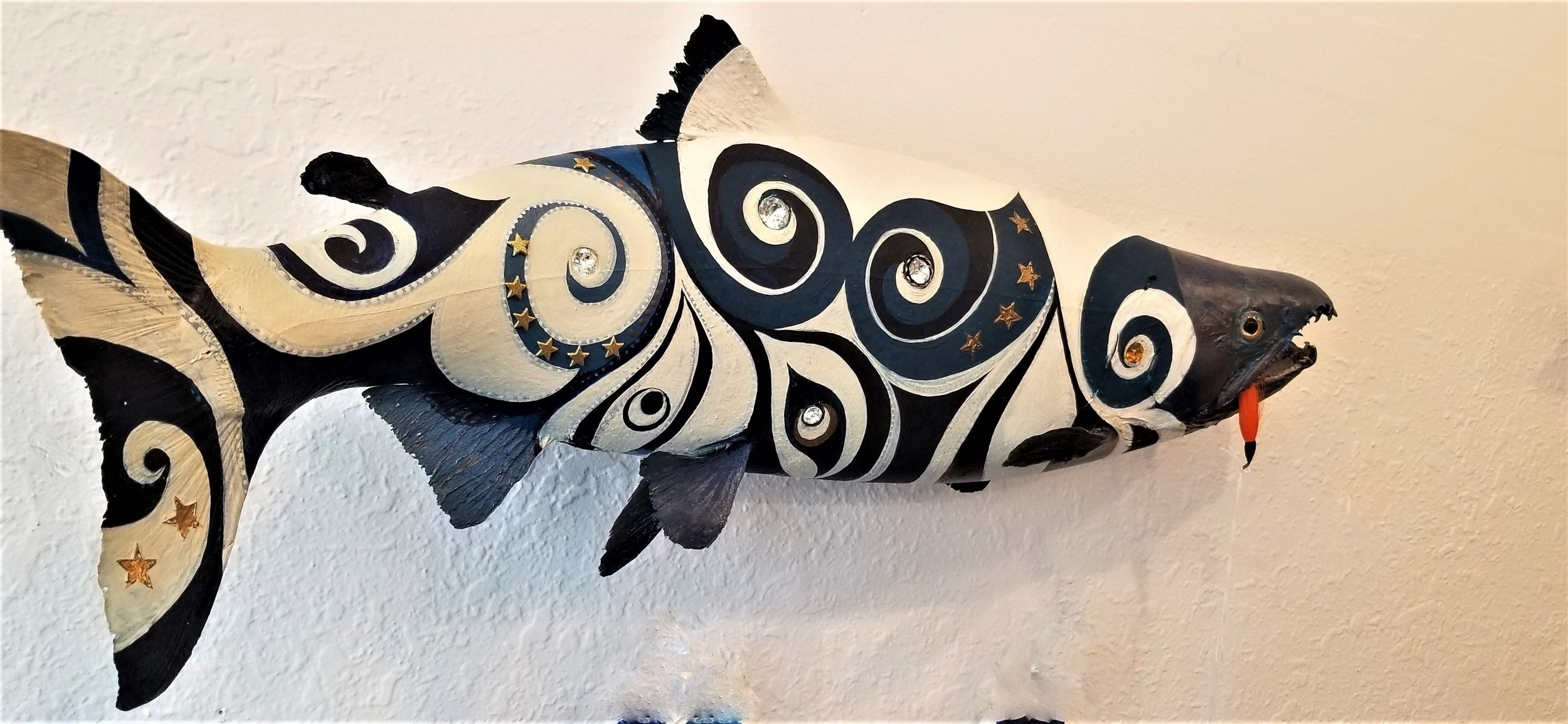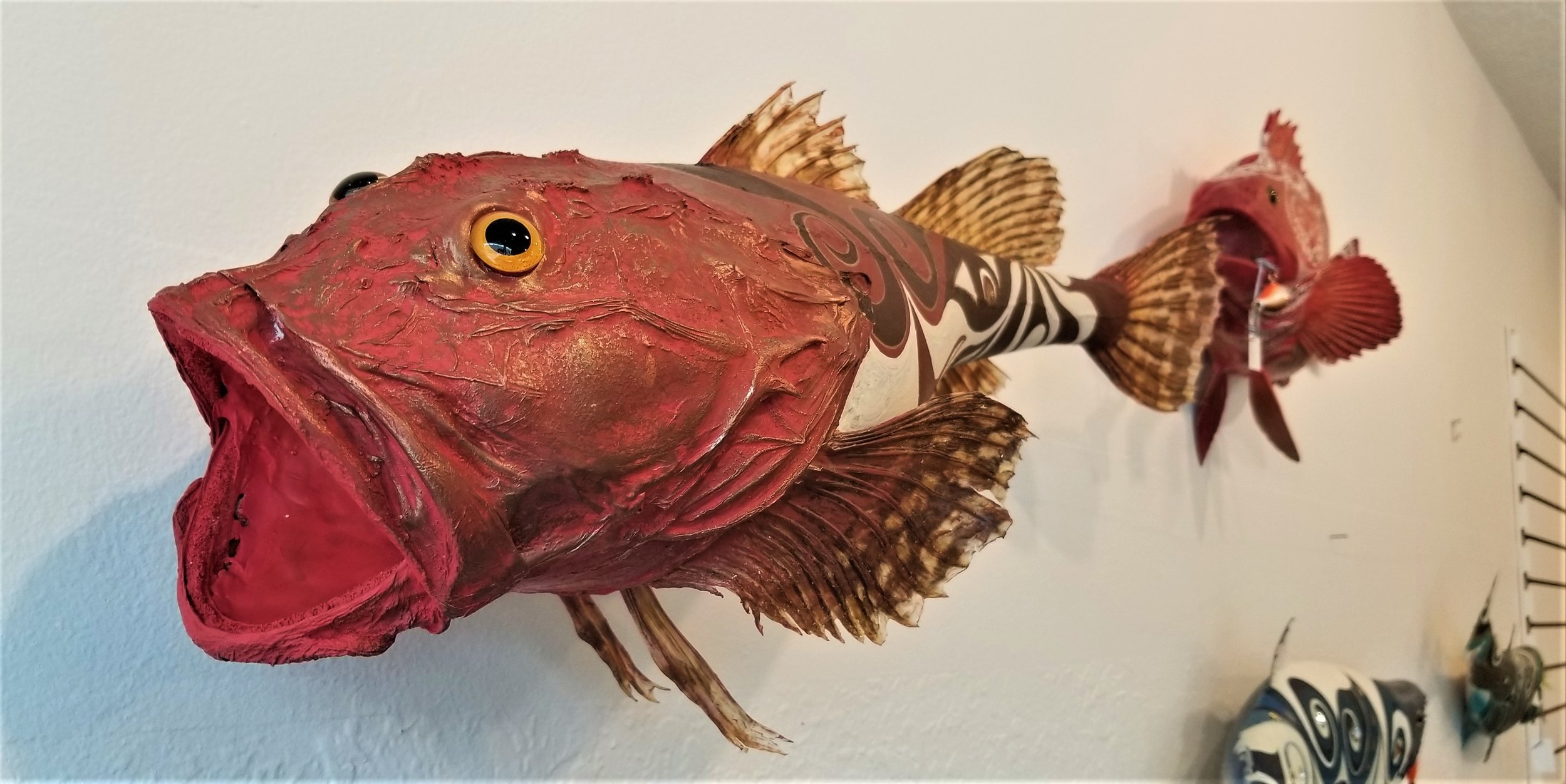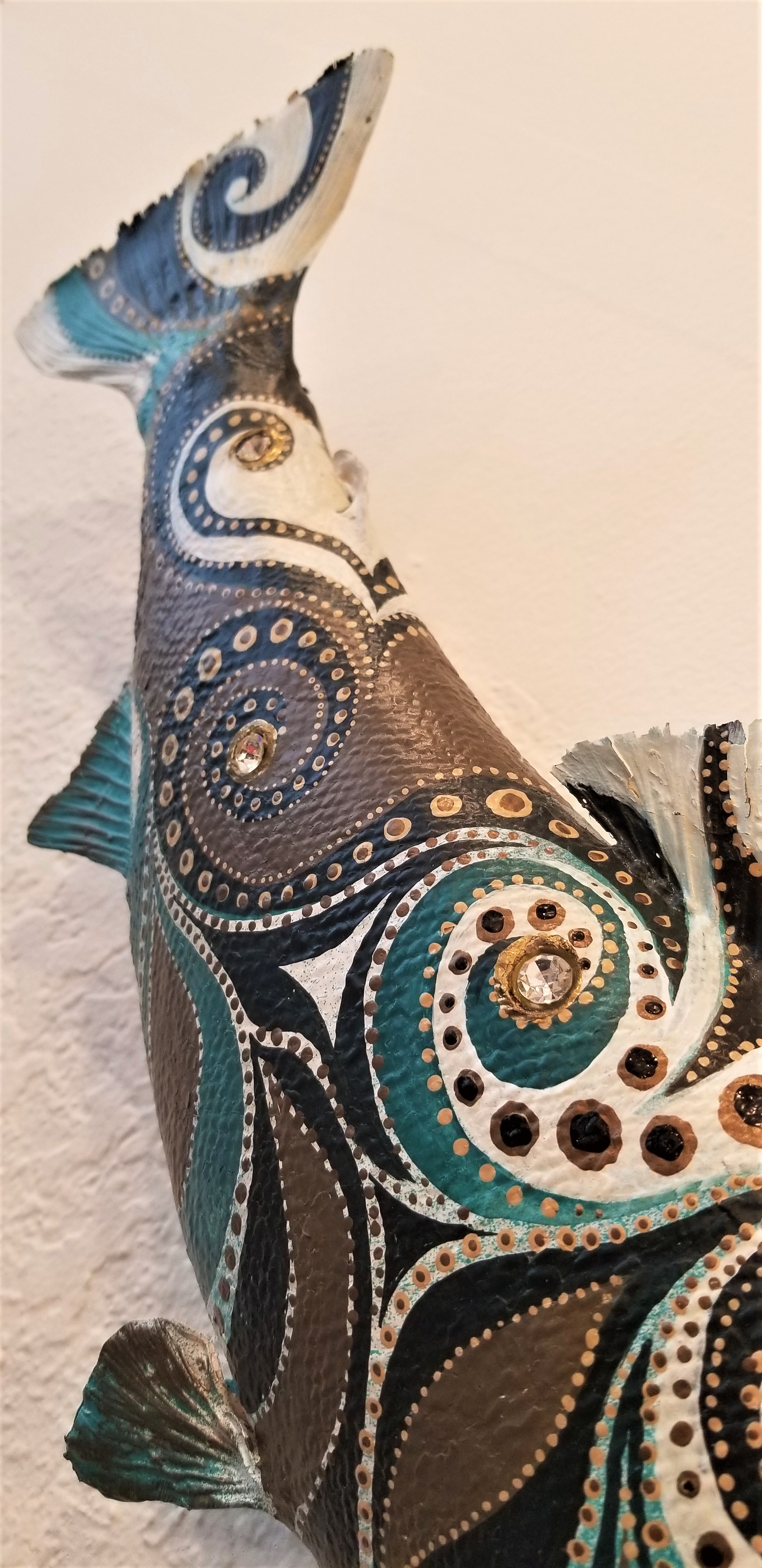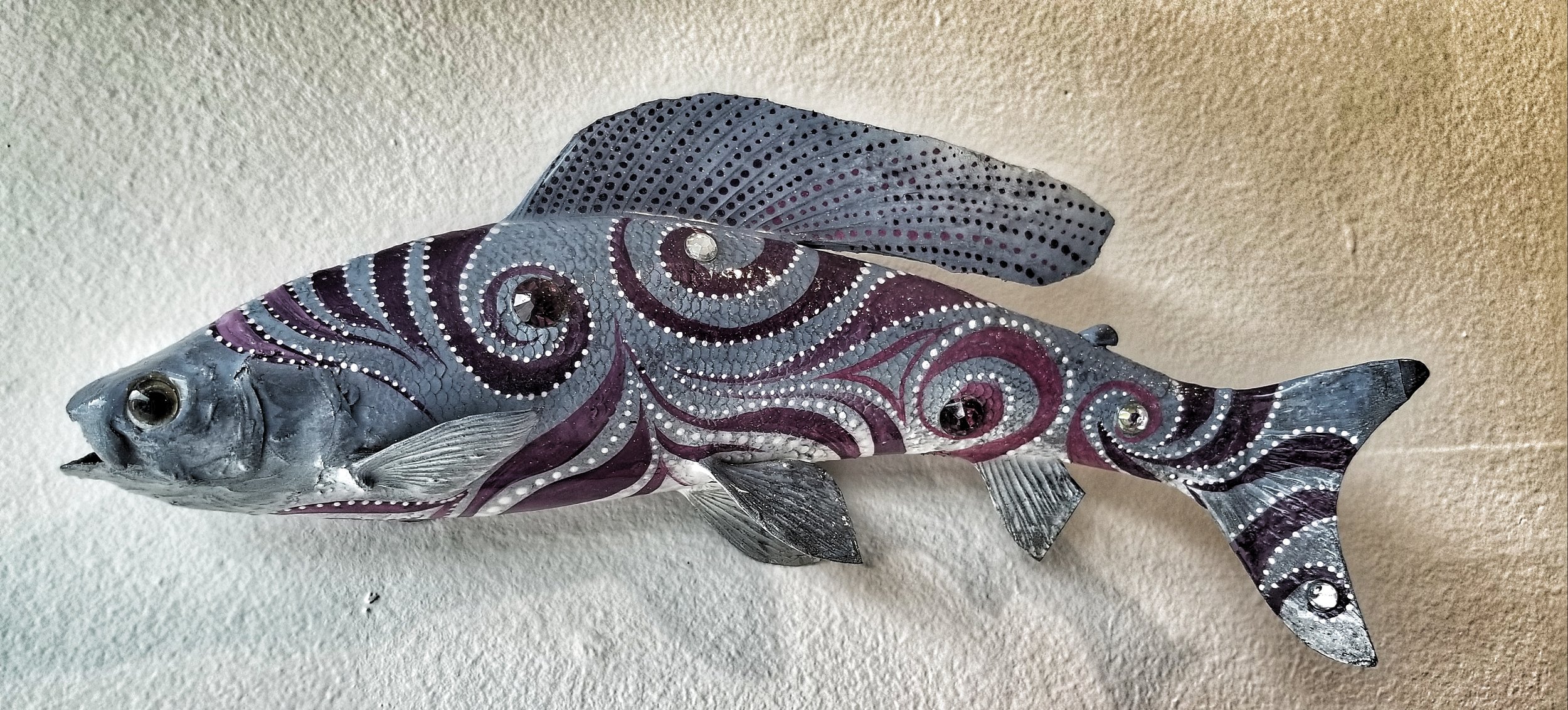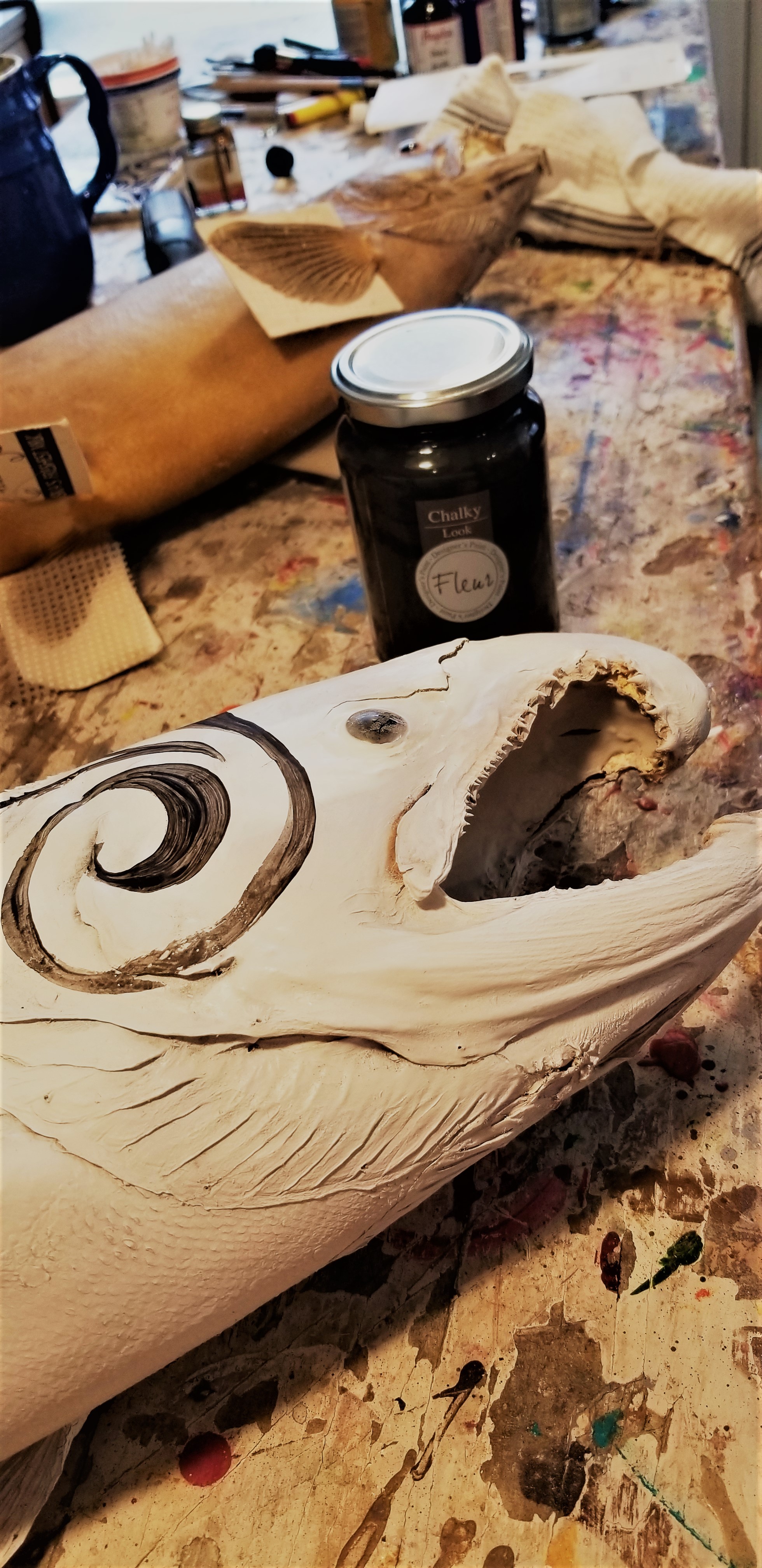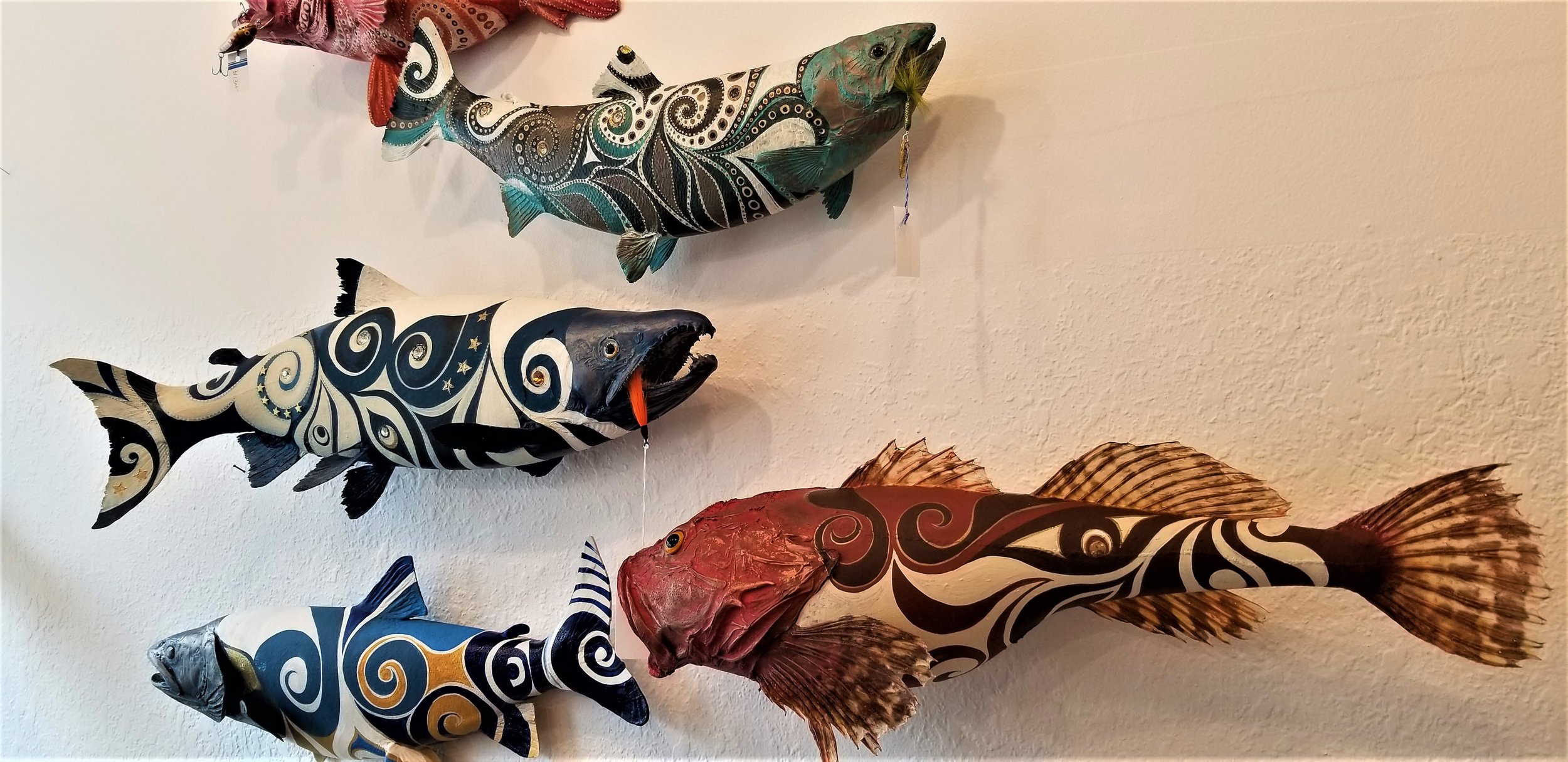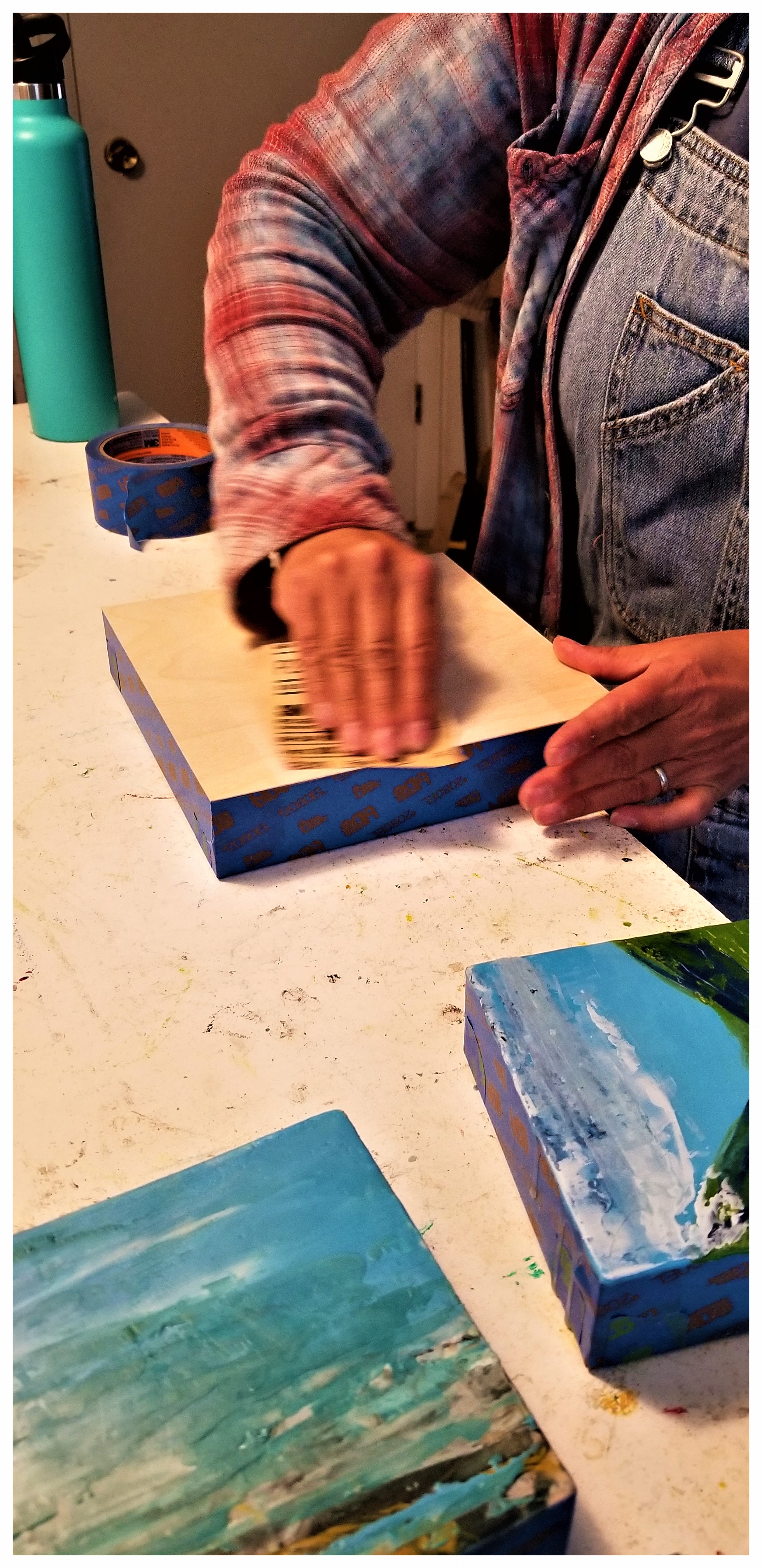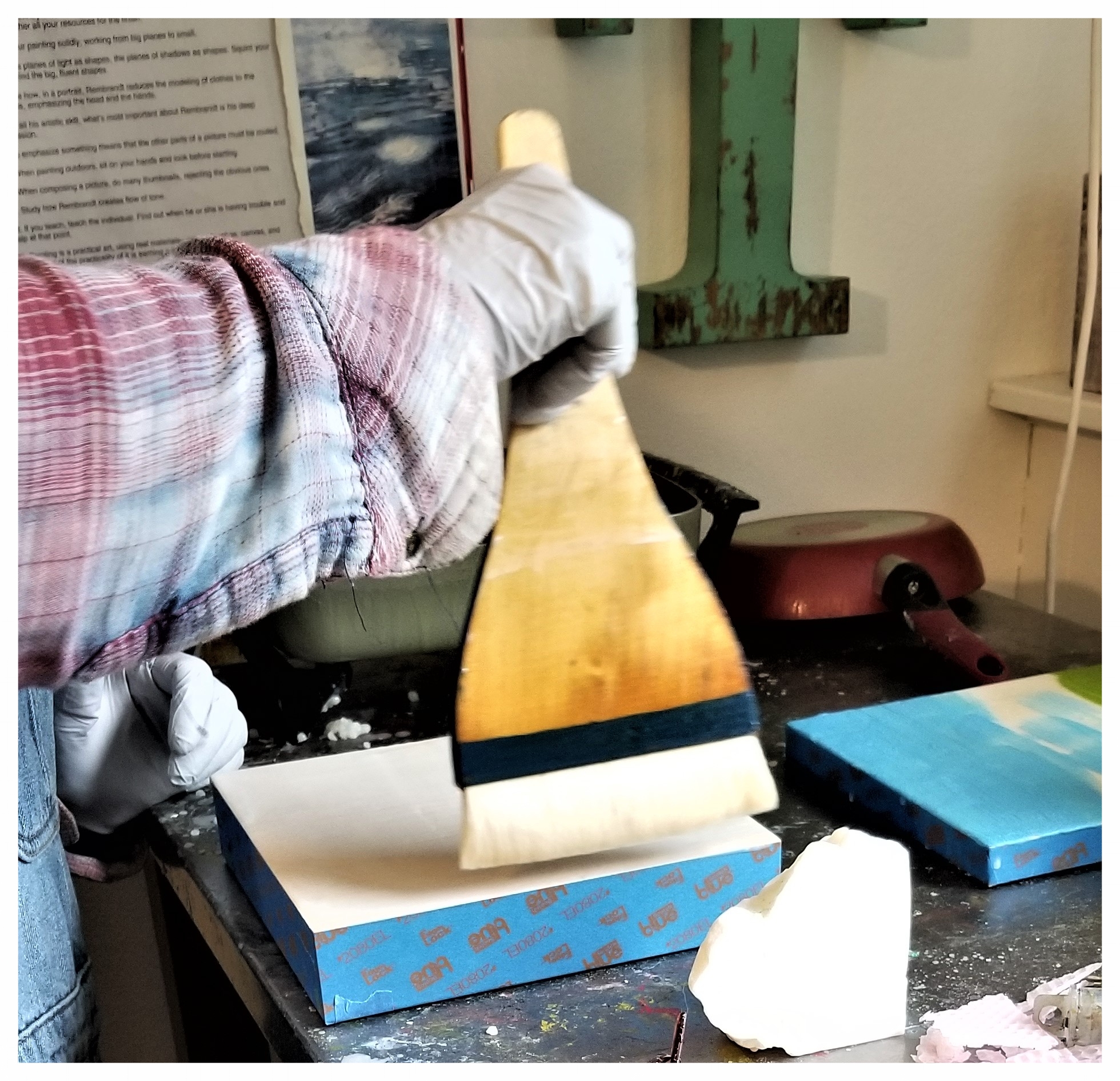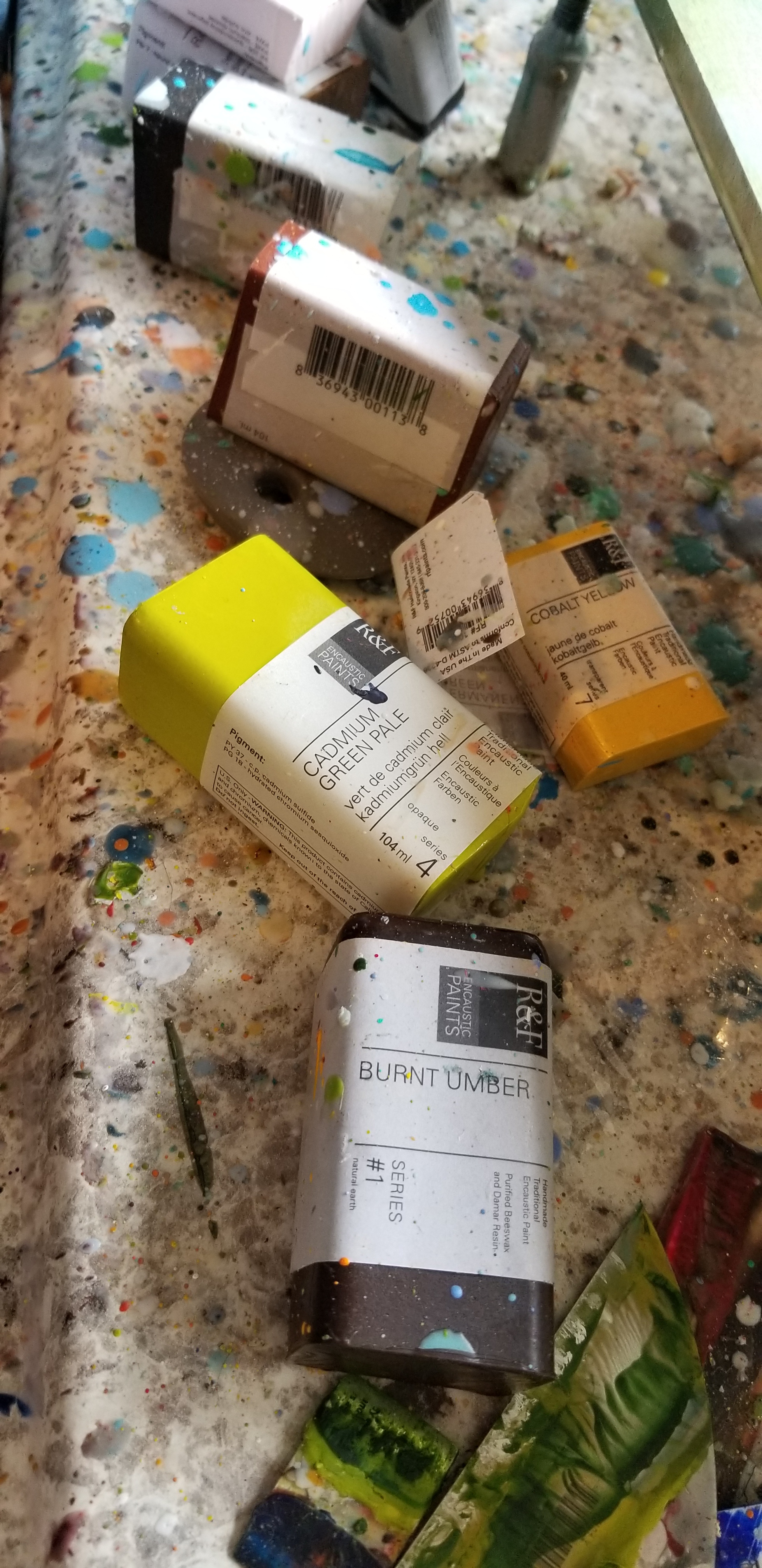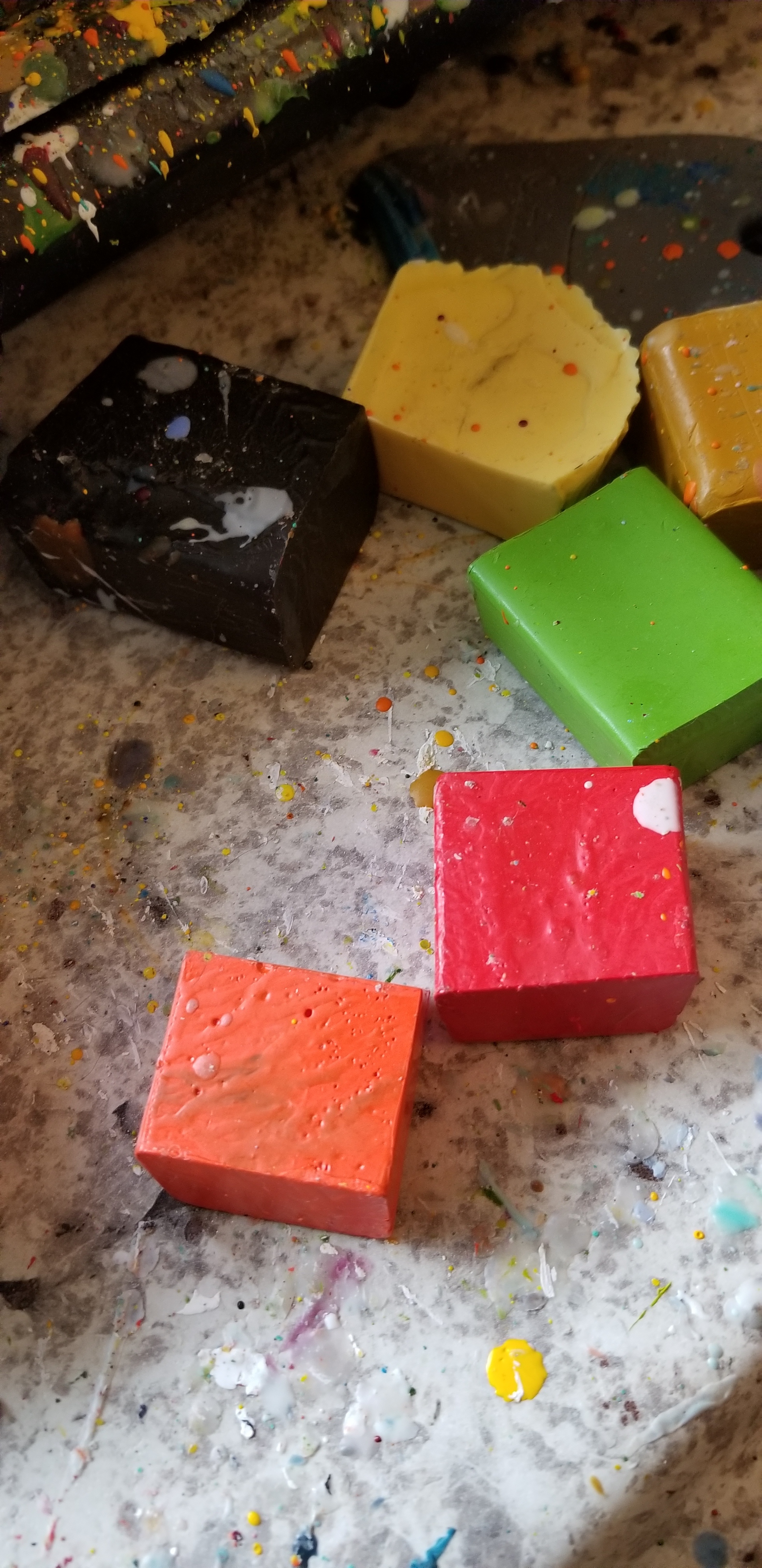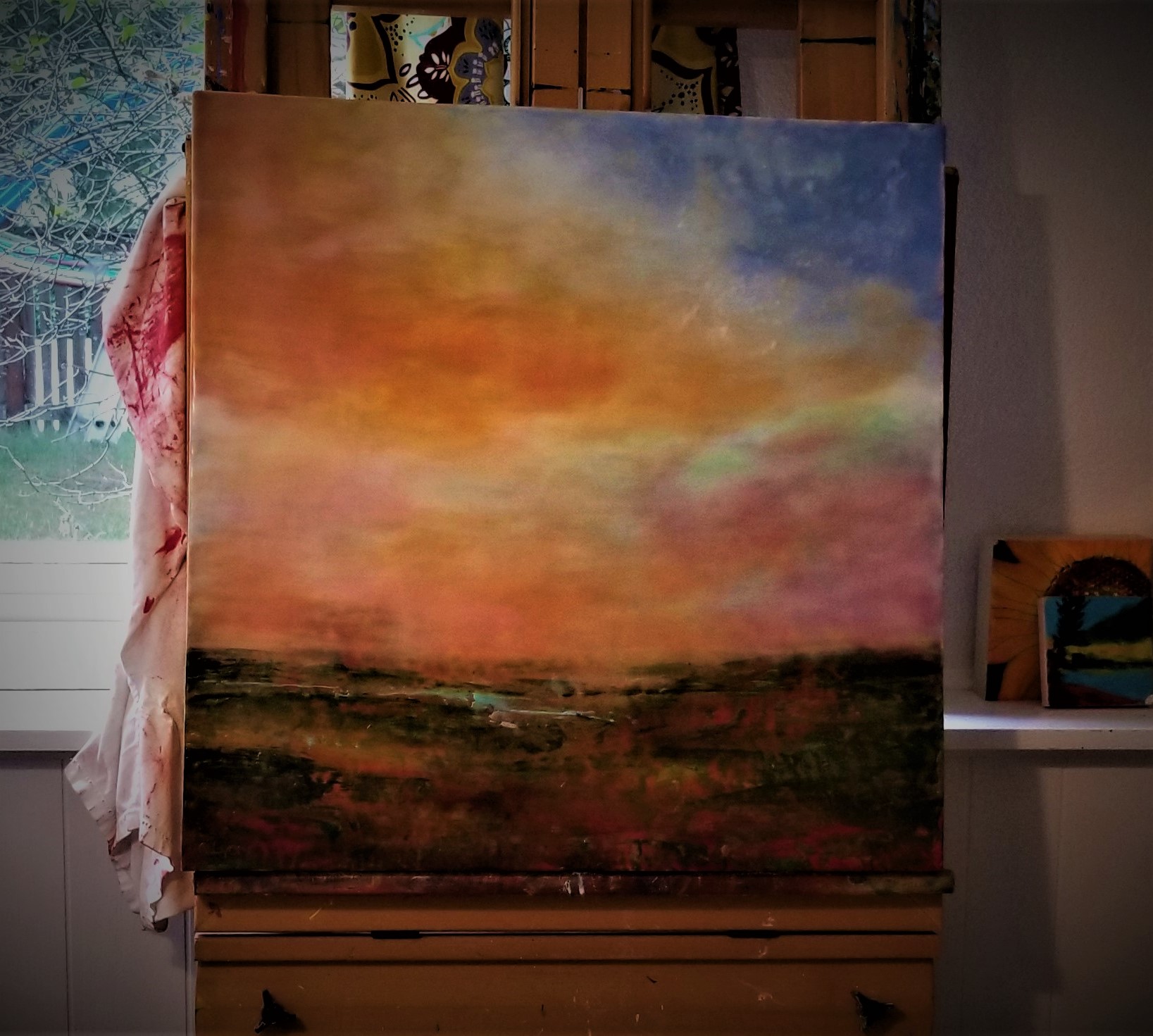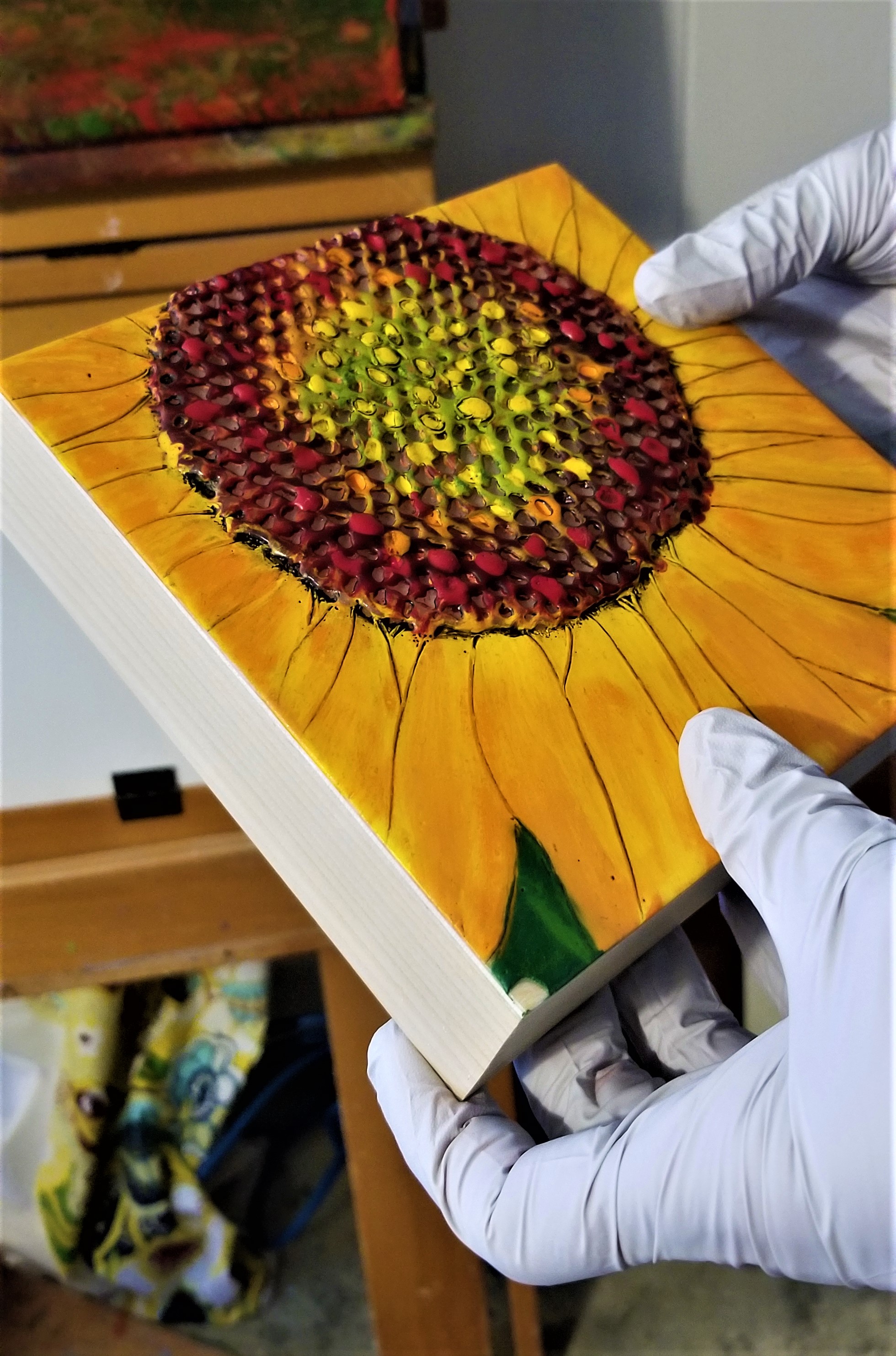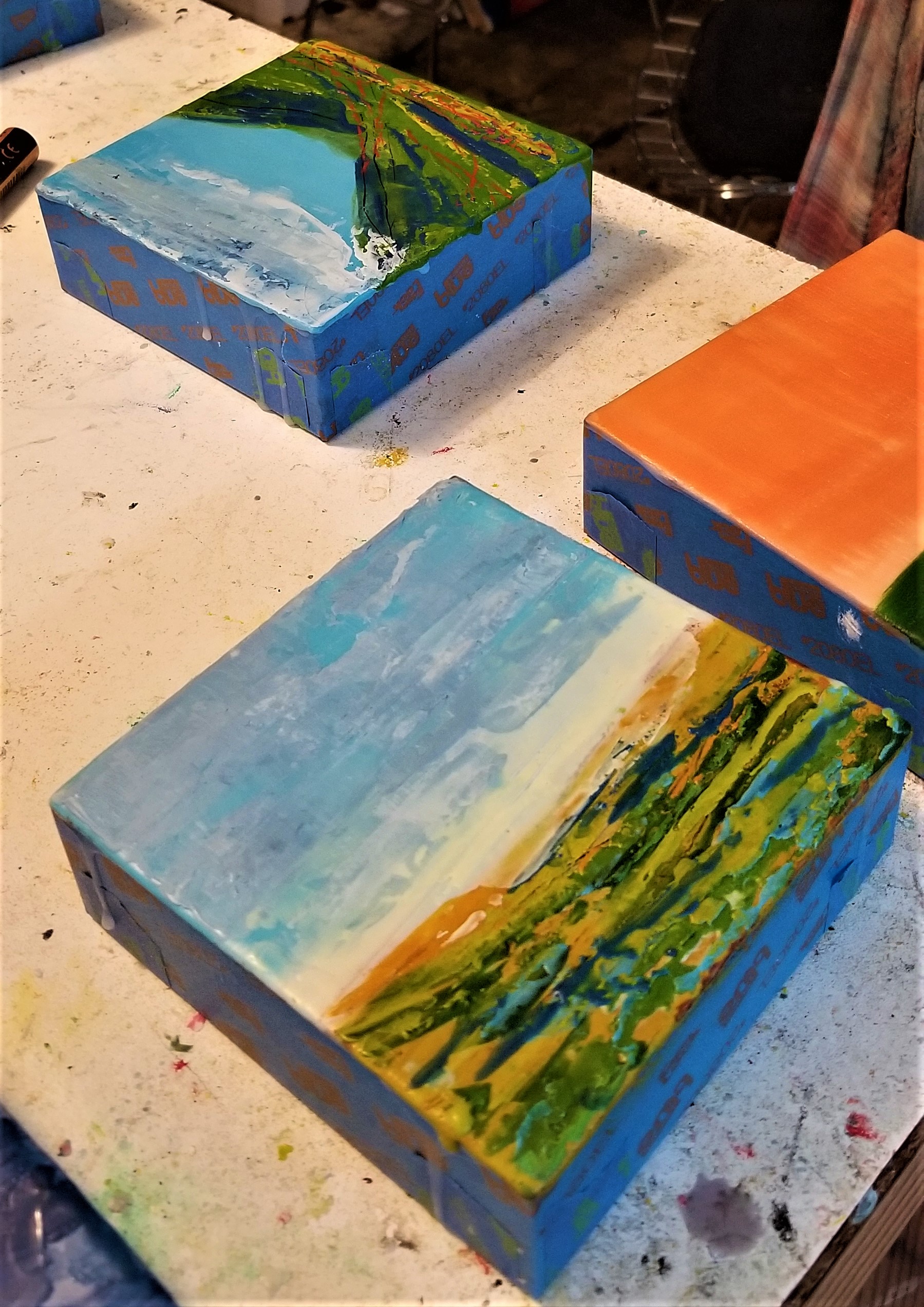I met Carol and Steven Shade at the Saturday market in Homer, Alaska. Steven is an Alaskan Native silversmith and master carver and Carol specializes in bead work. Together they sell their creations at their shop, Creative Native Gifts. They live near Ninilchik, a fishing village about 40 miles north of Homer.
Legitimate Alaskan native handicrafts have strict rules that need to be followed in order to earn the Authentic Alaska Native Art from Alaska seal. As the label says, "This symbol guarantees that the item is original, authentic Alaska Native art created or crafted in Alaska by an enrolled member of an Alaska Native Tribe." Steven is part of the Curyung tribe.
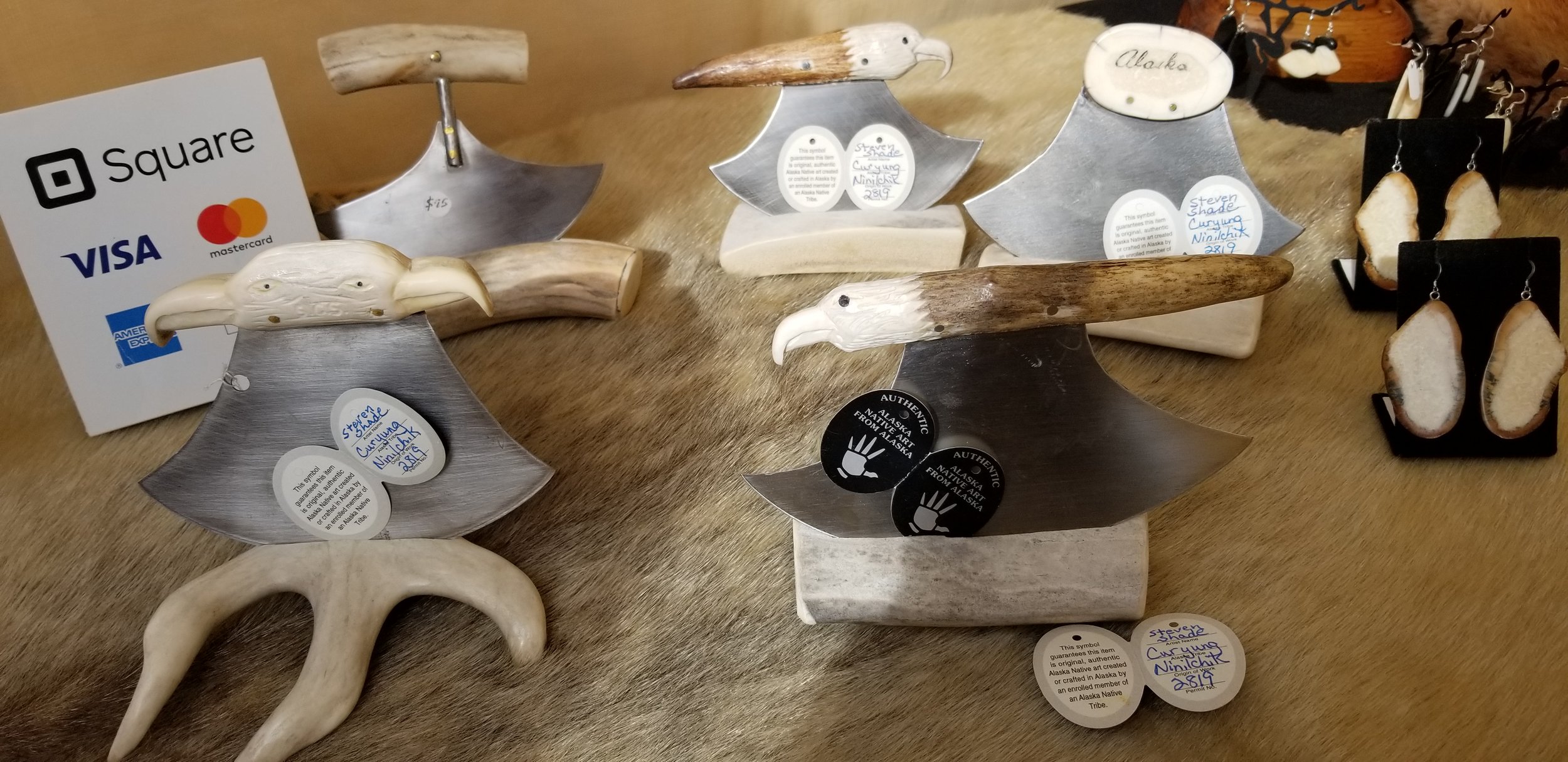
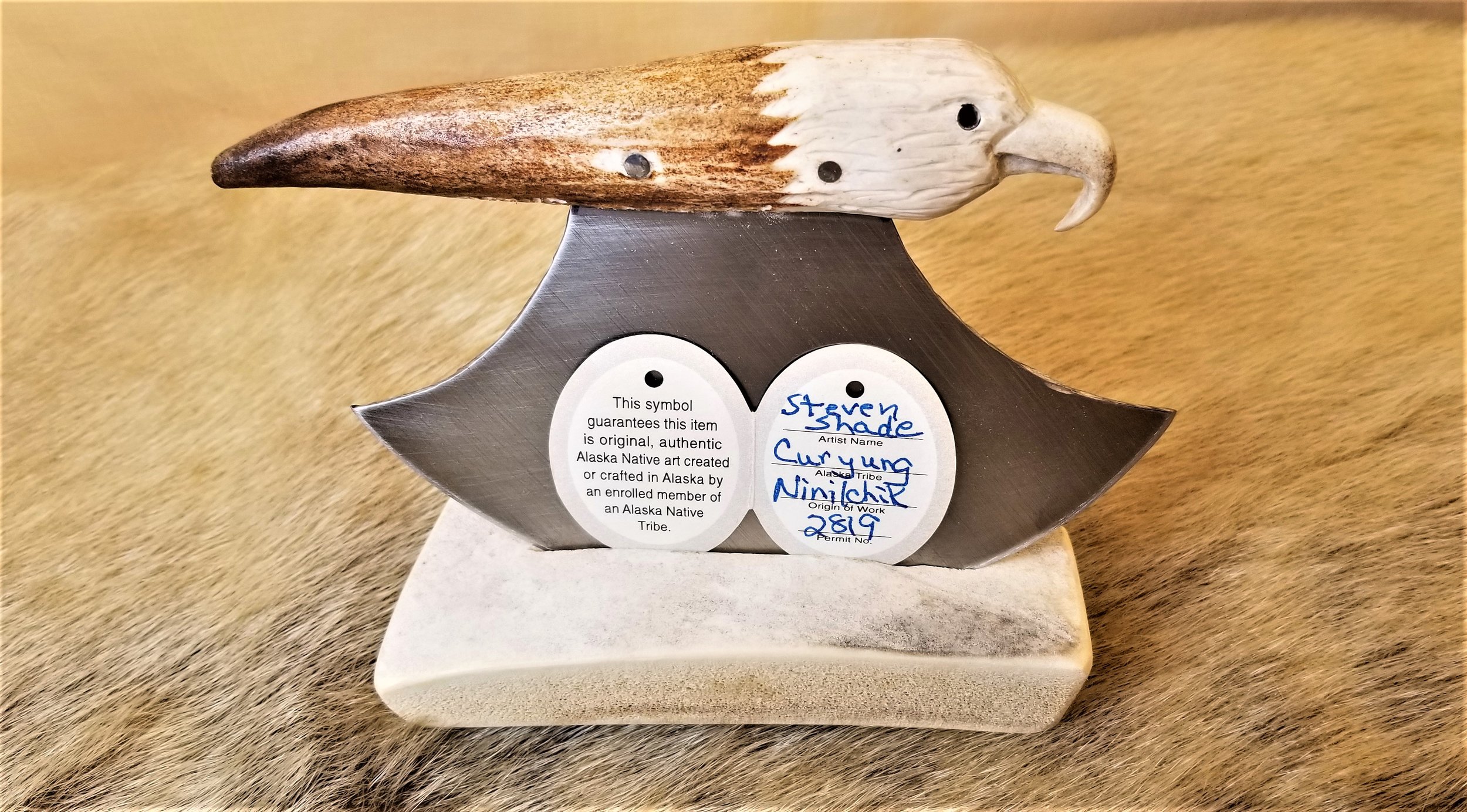
Now, I know you just did a double take on the ivory. And I know the word elicits strong reactions. But I learned from Carol and Steven that there are very strict laws in Alaska regarding walrus hunting. They can only be hunted by Alaska Native tribe members and they can only be hunted for subsistence purposes. And they may only hunt what they and their village can reasonably utilize. The Eskimo Walrus Commission is devoted to managing and conserving the walrus herds in Alaska and they hold an annual meeting to disseminate the number each tribe is allowed to hunt. This is a way of life for these peoples and they take the conservation of the walrus quite seriously. I'm glad there are these checks and balances in place.
Only Native Alaskans can harvest, buy, and carve raw ivory. Non-Natives can only possess it after it has been made into a craft. The exception is fossilized ivory that is found on the beach. Non-Natives can keep their find as long as they report it within 30 days so it can be tagged by the Fish & Wildlife Commission.
I purchased a lovely fossilized ivory necklace and a bone-handled ulu from Steven. If you're interested in seeing more of his work, follow his Facebook page. And if you've never seen an ulu in action, check out the fastest woman with an ulu!



